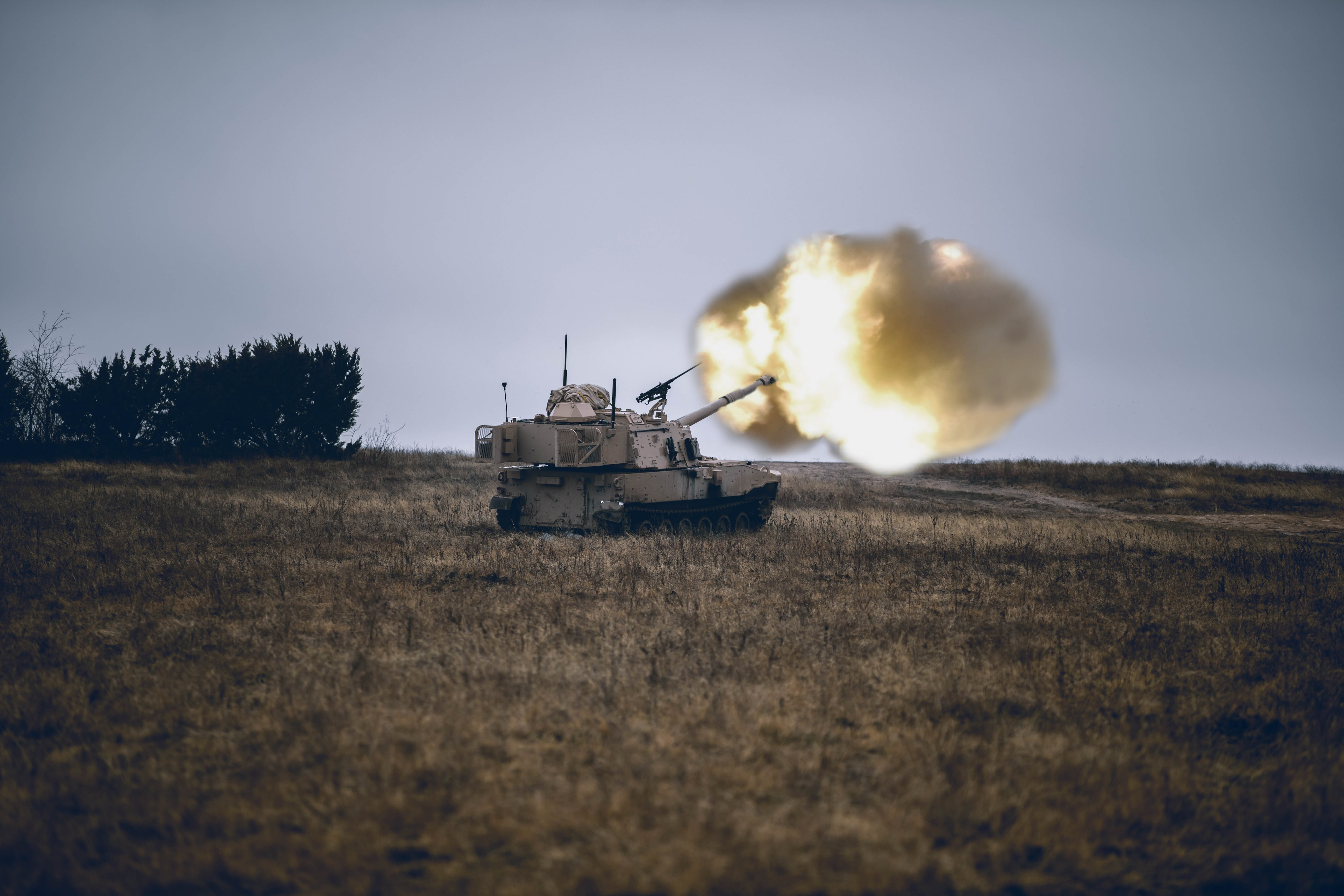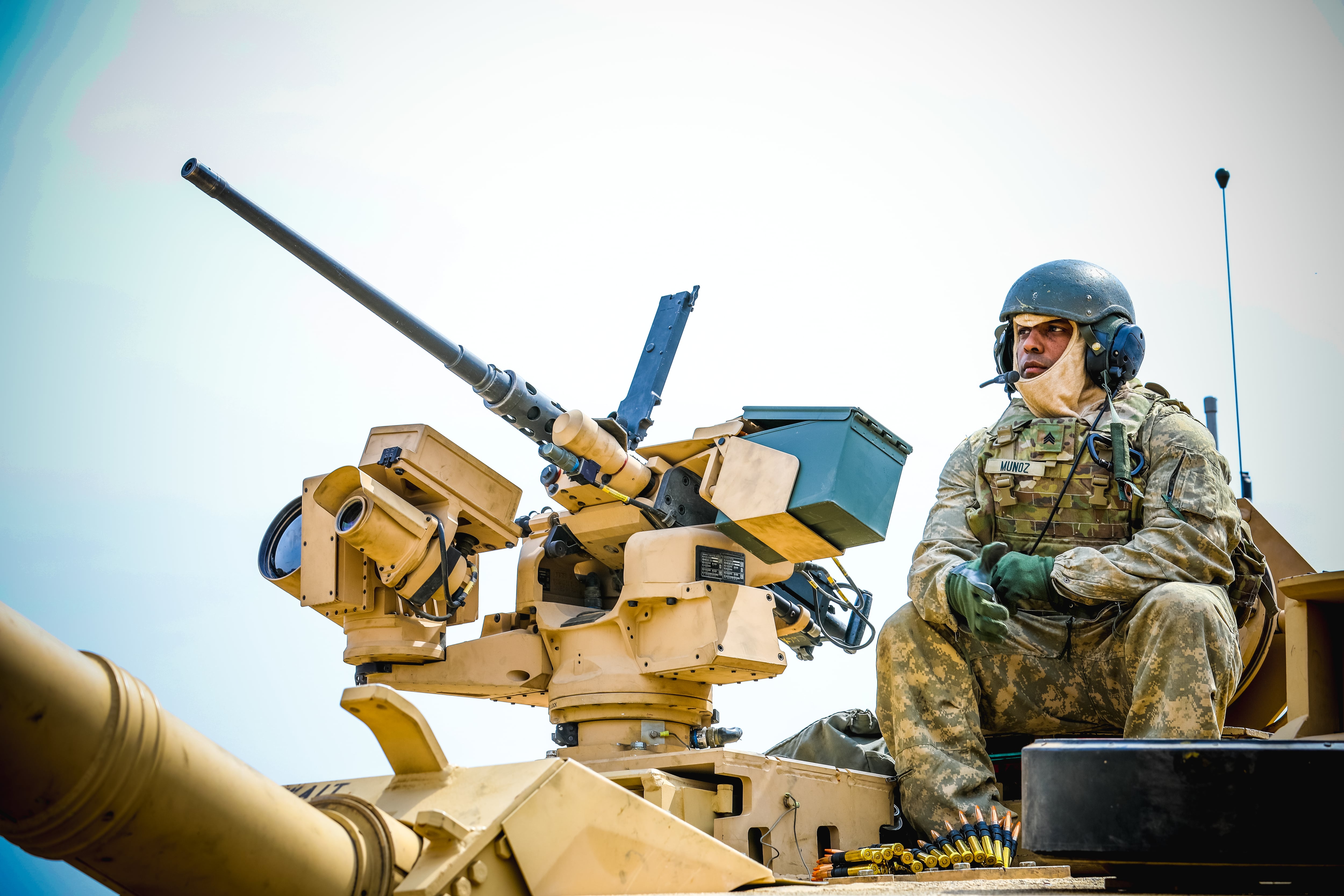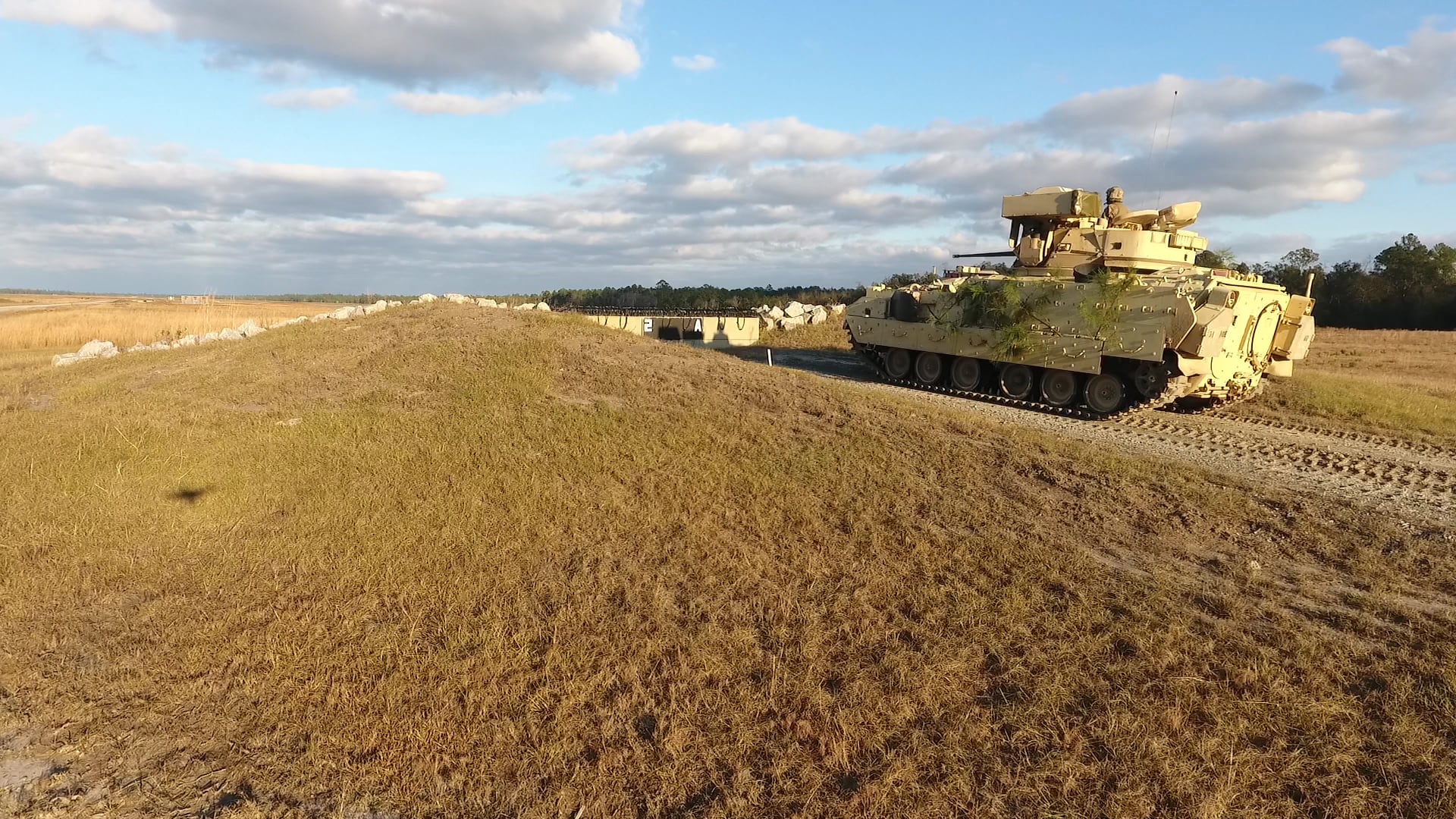Army planners are building a new type of battalion for the light tank design that is nearing a decision by service officials, and it’s going to require more armor crewmen.
The Mobile Protected Firepower battalion concept is becoming a reality, but it still faces its share of challenges.
Plans call for the MPF battalion to reside at the division level. It will then farm out companies to each brigade, said Christopher Stone, deputy director of the Army’s capability manager for the infantry brigade combat team.
Stone spoke at the 2022 Maneuver Warfighter Conference at Fort Benning, Georgia, on Feb. 16.
“The MPF company looks and smells like a tank company,” Stone said.
RELATED

Final decisions on the MPF structure await big Army approval, some of which will come from an oversight council meeting in March. The MPF platform decision could possibly come by May. The Army will choose between prototypes built by General Dynamics Land Systems and BAE Systems.
The General Dynamics version is basically a scaled-down Abrams tank with a 105mm cannon. The BAE Systems version is similar to the M8 Buford armored gun system, which was previously developed to replace the M551 Sheridan light tank — once used by units such as the 82nd Airborne Division.
Both companies delivered a dozen prototypes for testing, evaluation and soldier feedback.
The light tanks went through soldier vehicle assessments with the 82nd Airborne Division and gunnery fires in 2021, Army Times’ sister publication Defense News reported.
The Army had to pair the development of both the platform and the unit as the program moved along. If out of sync, there’s a lot of wasted time and effort.
“The last thing we want to do is give you an MPF battalion, then you’re waiting six years to receive the platforms,” Stone said.
The concept emerged in earnest from a “statement of need” in 2013, as Army leaders saw gaps in the infantry brigade firepower that could limit maneuver in large-scale combat against peer adversaries, Stone said.
At the time, Stone said, the service was a brigade-centric Army that had scaled down to fight counterinsurgency and counterterrorism wars, shedding some of its heavier assets not needed in those missions.

So direct fire assets and armor were consolidated at the brigade level. But that worked primarily because the units weren’t called upon as often as they will be in a more intense, near-peer battle.
Fighting in that setup now would mean one company out of 40 companies being tasked with a quarter of the missions, which is not a sustainable model, Stone said.
So the Army will need to add more armor crewmen to formations.
Current plans for the MPF concept require a company of 64 armor crewmen in each infantry brigade from the MPF battalion. But that’s not the only demand on the armor field, which this concept creates. They’ll also need at least 24 armor maintenance soldiers per brigade to keep the light tanks running.
And leaders don’t want to strip out all the assets from the brigade to create these positions; so infantry brigades will retain much of their structure while adding the armor soldiers they need for the new integrated tank/infantry mission, Stone said.
In some units, such as the 1st Cavalry Division and the 1st Armor Division, which contain three brigades, leaders will have options to satisfy the new tank personnel requirements. But others with fewer brigades, such as 25th Infantry Division, don’t have as much personnel depth, according to Stone.
The Army wants to have the first unit equipped by fiscal 2025, Stone said. Planners want the unit structure in place and a battalion headquarters ready to pair soldiers with light tanks before then.
While changes could occur, the 82nd Airborne Division, the 173rd Airborne Brigade and a not-yet-identified Army National Guard unit will likely be in the first round of fielding, Stone added.

Stone cautioned in his presentation that much of what he shared was still considered pre-decisional.
Over the next six months, as events unfold, Stone’s team will work out plans for units such as 10th Mountain Division, 25th Infantry Division and other high-priority units, he said.
Beyond personnel, Army leaders have other challenges to face, including a limited quantity and serviceability of 105mm ammunition stocks. Leaders also have to find out where to place these light tanks to provide the best use of assets with ease of access for units that haven’t had to accommodate tanks in decades.
“Adding 14 tanks to Fort Benning — not that high of an impact,” Stone said. But a tank company headed to a Guard unit in Wisconsin that’s never had such weapon systems is a different story, he added.
On top of those training, storage and maintenance concerns, the Army will be bound by local environmental questions, which will be demanding in places such as Hawaii, home of the 25th ID, and Alaska.
One solution would be staging equipment at locations other than where soldiers are based.
For example, Stone said, light tanks stored at Fort AP Hill, Virginia, or Fort Stewart, Georgia, could be accessed by soldiers at Fort Bragg, North Carolina.
The Army would still want to keep the tanks within at least a six-hour drive of the unit using them. The 101st Airborne Division at Fort Campbell, Kentucky, for instance, could train with light tanks stored at Fort Knox, Kentucky, which is a two-and-a-half-hour drive.
Another item at issue is how to recover vehicles that go down. Right now, the only platform suited for the job is the M88A1 recovery vehicle, which comes in three variants.
Some of the repair parts for the older M88s are obsolete and there is not yet enough M88s to fill the light tank and heavier armor asset needs.
While the operational units will get these assets first in fiscal 2025, the schoolhouse and trainers at Fort Benning’s armor school aren’t expected to bring vehicles on site until fiscal 2026. Under that plan, they won’t start pumping out trained MPF crewmen and leaders until fiscal 2027, Stone said.
Todd South has written about crime, courts, government and the military for multiple publications since 2004 and was named a 2014 Pulitzer finalist for a co-written project on witness intimidation. Todd is a Marine veteran of the Iraq War.




